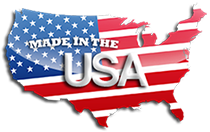
How to Determine the Right Press for You
This question is like asking how big of a car do I need? It depends mostly on two factors: platen size and inject volume. Both of those factors are indirectly related to how many and/or how large the parts are that you will ever want to run in the press.
Step 1: Determine Your Mold Size
The larger the mold, the more and/or larger parts you can produce. In addition, a larger mold can result in a decreased cost per part as you could run many more parts at the same time and with the same operator.
Step 2: Determine Your Platen Size
The platens heat the mold and should be at least the size of the mold you want to run. The larger the platen, the larger the mold you can run. A platen size of 16" x 16", for example, will result in 256 square inches of surface area. A platen size of 32" x 32" will result in 1024 square inches of surface area.
During the inject cycle, however, the rubber being injected into the larger platen size results in more force driving the platens apart. Without increasing the clamping force of the platens, rubber would leak out resulting in excess flash and inconsistent fills. This is why larger platens require larger clamping force.
Please note that we make many more sizes than are shown above. Also, we are able put different size platens with different inject sizes and with different clamp sizes. The below example is meant to allow you to calculate approximate requirements.
Example of our Standard Press Clamping Force Size vs. Platen Size
| Clamping Force | Platen Size (in.) | Surface Area (sq. in.) |
|---|---|---|
| 100 Ton | 16 x 16 | 256 |
| 200 Ton | 18 x 22 | 396 |
| 300 Ton | 24 x 25 | 600 |
| 500 Ton | 30 x 30 | 900 |
Step 3: Determine Your Inject Size
The inject size describes how much rubber can be injected in one shot. US Molding Machinery describes this in pounds (lb) of rubber @ 1.25 specific gravity or when the displacement is in cubic inches (in3) at 22.5 in3/lb.
As an example, if your part uses 5 ounces of rubber and you have 8 cavities in your mold, your parts require 40 ounces per shot or 2.5 lb. Typically, you might think our standard 2.7 lb. inject size would be sufficient, but injection molds require a runner system, or a way to get the rubber from the inject nozzle to the cavities. Also, you may decide to run larger parts on this press in the future. A safer choice in this case may be our standard 5.5 lb inject size.
Please note that we make many more sizes than are shown above. Also, we are able put different size platens with different inject sizes and with different clamp sizes. The below example is meant to allow you to calculate approximate requirements.
Example of our Standard Press Clamping Force Size vs. Inject Size
| Clamping Force | Inject Size* |
|---|---|
| 100 Ton | 17 .oz |
| 200 Ton | 2.7 .lbs |
| 300 Ton | 5.5 .lbs |
| 500 Ton | 10 .lbs |
*Be sure to include the volume of the injection mold’s runner system in your calculations.

